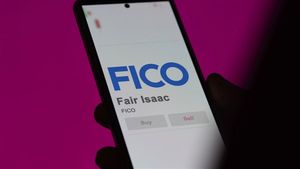
AT&T Inc. (NYSE: T) has once again declared its quarterly dividend, maintaining a steady payout of $0.2775 per share. This announcement, made around September 26, 2025, with a record date of October 10, 2025, and a payment date of November 3, 2025, offers a crucial signal to investors. While a specific amount is now known, the very act of a consistent declaration underscores the company's commitment to shareholder returns amidst a period of strategic recalibration and significant industry transformation.
For income-focused investors, the predictable nature of this dividend is particularly noteworthy. Following a substantial dividend cut in 2022, AT&T has been keen to establish a new, sustainable dividend policy. This latest declaration reinforces the company's stated financial priorities: debt reduction, reinvestment in core telecom assets, and a reliable, albeit not growing, return to shareholders. It suggests a company that is settling into its post-spin-off identity, prioritizing financial prudence over aggressive dividend growth.
Detailed Coverage: A Dividend Forged in Transformation
The recent declaration of a $0.2775 per share quarterly dividend by AT&T (NYSE: T) for its November 2025 payment cycle is a key development for the telecommunications giant. This payout, translating to an annualized dividend of $1.11 per share, continues the company's commitment to its revised dividend strategy, which began in earnest in 2022. The consistency of this specific amount, maintained since the significant policy overhaul, is the primary takeaway for market observers.
The timeline leading to this moment is crucial for understanding AT&T's current posture. For decades, AT&T was a revered "Dividend Aristocrat," boasting 36 consecutive years of dividend increases. However, this long-standing streak concluded dramatically in 2022 with a nearly 46% reduction in its annual dividend, from $2.08 to $1.11 per share. This drastic cut was a direct consequence of the spin-off of its WarnerMedia segment, which subsequently merged with Discovery to form Warner Bros. Discovery. The divestiture was a strategic pivot, allowing AT&T to shed non-core assets, significantly reduce its substantial debt load, and refocus entirely on its foundational telecommunications business, particularly the capital-intensive rollout of 5G and fiber infrastructure.
Key players in this decision include AT&T's executive management and board of directors, who have championed a strategy centered on financial deleveraging and sustainable growth within its core operations. For investors, particularly those who relied on AT&T's historical dividend growth, the period since 2022 has been one of adjustment. The current consistent dividend, therefore, aims to re-establish trust and attract a new cohort of income-oriented investors who value stability over aggressive growth. Initial market reactions to such declarations are typically muted if the amount is expected, reflecting that the market has largely priced in AT&T's current dividend strategy.
Impact on Public Companies: Navigating the Telecom Landscape
This dividend declaration has distinct implications for AT&T (NYSE: T) and its competitors. For AT&T itself, the unwavering $0.2775 quarterly payout reinforces its narrative of financial stability and commitment to shareholder returns within its new strategic framework. By maintaining this dividend, the company aims to solidify investor confidence, particularly among those seeking reliable income. This consistency can help stabilize its stock price and attract a segment of the market that values predictable cash flow, even if significant capital appreciation isn't the primary driver. It signals that the company's free cash flow generation is sufficient to cover its dividend obligations while also funding necessary network investments and debt reduction.
The impact on competitors like Verizon Communications Inc. (NYSE: VZ) and T-Mobile US, Inc. (NASDAQ: TMUS) is more nuanced. Verizon, often considered AT&T's closest peer in the legacy telecom space, also offers a substantial dividend. AT&T's consistent payout ensures that it remains competitive as an income-generating stock, potentially influencing how investors view Verizon's dividend sustainability and growth. If AT&T's strategy proves successful in stabilizing its financial health, it could put pressure on Verizon to demonstrate similar prudence or growth in its own dividend.
T-Mobile, on the other hand, typically prioritizes growth and network expansion over significant dividends, though it has initiated a share repurchase program. AT&T's dividend stability highlights the differing capital allocation strategies within the sector. While AT&T and Verizon cater to income investors, T-Mobile targets growth-oriented shareholders. This divergence allows each company to appeal to different investor profiles, but AT&T's commitment to its dividend ensures it remains a prominent player in the income-investment segment of the market. Ultimately, AT&T's move reaffirms the role of dividends as a key differentiator and a tool for managing investor expectations in the capital-intensive telecommunications industry.
Wider Significance: A Bellwether for Mature Industries
AT&T's consistent dividend declaration is more than just a corporate announcement; it's a significant indicator of broader trends within the telecommunications industry and, by extension, other mature, capital-intensive sectors. The event underscores the industry's pivot towards sustainable financial models, particularly after years of aggressive expansion and debt accumulation. The ongoing rollout of 5G technology and the expansion of fiber networks demand immense capital expenditure, making prudent capital allocation, including dividend policy, paramount. AT&T's choice to maintain a stable dividend, rather than increasing it, signals a prioritization of reinvestment into its core infrastructure and continued debt reduction, a strategy likely to be emulated or closely watched by peers.
This event also highlights a broader market trend where companies in mature industries are increasingly focused on free cash flow generation and balance sheet strength. For many years, AT&T's status as a Dividend Aristocrat linked it to a certain investor expectation of perpetual dividend growth. Its 2022 dividend cut, though painful for some, set a new precedent: sustainability over an unbroken streak. The current stability confirms that this new paradigm is firmly in place. This shift reflects a more realistic assessment of the financial demands of modern telecom, where technological advancement and competitive pressures necessitate significant ongoing investment.
While direct regulatory or policy implications are minimal for a standard dividend declaration, the underlying financial health and investment strategies reflected in AT&T's dividend policy are of interest to regulators. A stable, well-capitalized telecom provider is better positioned to meet universal service obligations and contribute to national infrastructure goals. Historically, telecom companies have been seen as reliable income generators, and while AT&T's dividend history has seen a major reset, its current stability suggests a return to a more predictable, if less aggressively growing, income profile for the sector.
What Comes Next: A Path of Prudence and Investment
Looking ahead, the immediate short-term implications of AT&T's dividend declaration revolve around the actual payment on November 3, 2025, providing direct returns to shareholders. Beyond that, the sustained commitment to the $0.2775 quarterly dividend signals AT&T's long-term strategic direction. The company has explicitly stated its expectation to maintain this annualized common stock dividend of $1.11 per share from 2025 through 2027. This guidance suggests that significant dividend increases are not on the immediate horizon, as AT&T remains focused on its dual priorities of debt reduction and robust investment in its 5G and fiber networks.
Potential strategic pivots or adaptations required by AT&T will center on efficiently executing its network build-out while consistently generating the free cash flow necessary to cover its dividend and continue deleveraging. The market opportunities that may emerge for AT&T are primarily for income-seeking investors who prioritize stability and a relatively high yield in a mature industry. Challenges will include navigating intense competition, managing the immense capital costs of infrastructure upgrades, and proving that its focused telecom strategy can deliver sustainable, albeit modest, growth.
Potential scenarios and outcomes include AT&T successfully reducing its debt to target levels and completing its network expansion, which could eventually open the door for future dividend growth or share buybacks beyond 2027. Conversely, unforeseen economic downturns or intensified competition could strain free cash flow, challenging even the current stable dividend. Investors will closely monitor AT&T's quarterly earnings reports for updates on subscriber growth, capital expenditures, and especially, free cash flow generation.
Comprehensive Wrap-up: Stability in a Dynamic Market
AT&T's (NYSE: T) consistent declaration of its $0.2775 quarterly dividend serves as a crucial reaffirmation of its post-restructuring financial strategy. The key takeaway is the company's commitment to a stable, sustainable payout, prioritizing financial prudence and core business investment over the pursuit of aggressive dividend growth that characterized its past. This move solidifies AT&T's position as a reliable income play within the telecommunications sector, appealing to investors who value predictable returns in a mature market.
Moving forward, the market's perception of AT&T will increasingly hinge on its ability to execute its strategic objectives: continued debt reduction, efficient 5G and fiber network expansion, and consistent free cash flow generation. The dividend, while a significant component of shareholder return, is now firmly anchored to the company's operational performance and financial health rather than a legacy promise. This shift represents a more realistic and perhaps healthier approach for a company operating in a highly competitive and capital-intensive industry.
The lasting impact of this event lies in its signaling power. It indicates that AT&T has embraced a new identity, one focused on stability and strategic investment. For investors, the message is clear: AT&T offers a solid, predictable income stream, but capital appreciation will likely be driven by successful execution of its core telecom strategy. In the coming months, investors should closely watch AT&T's progress on debt reduction, its subscriber growth metrics in both wireless and fiber, and, critically, its free cash flow reports. These factors will ultimately dictate the long-term sustainability and potential evolution of its dividend policy.
This content is intended for informational purposes only and is not financial advice





